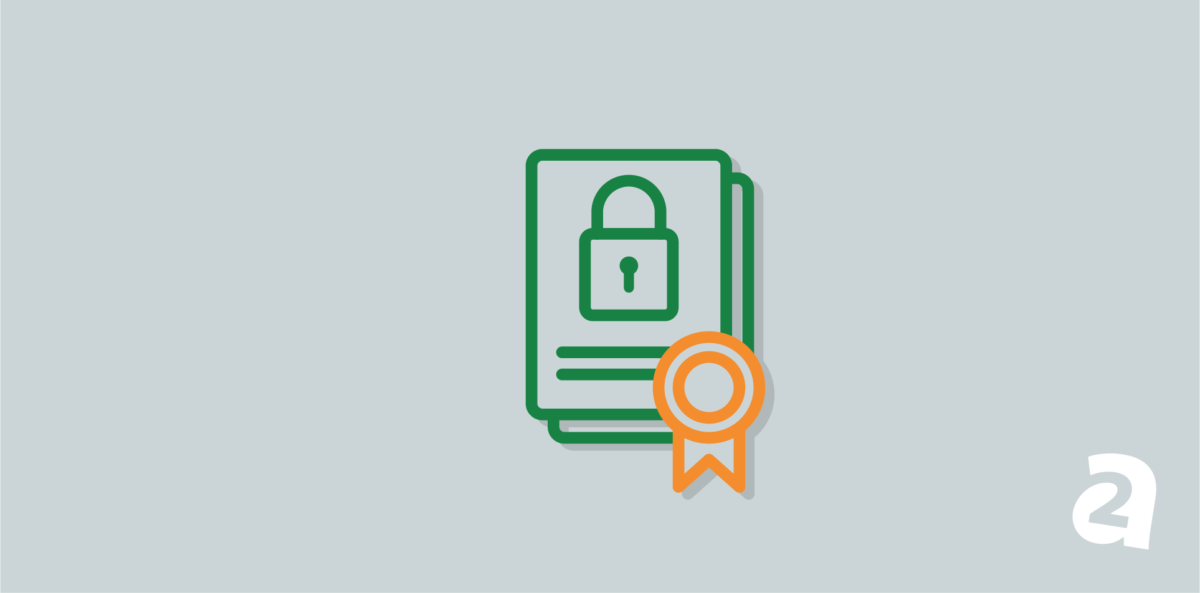- Mar 10, 2020
 0
0- by A2 Marketing Team
For website owners and artistic creators, online theft is a serious concern. Without measures to protect your content from plagiarism, you may find that others profit from your intellectual property without giving you any attribution.
Fortunately, there are steps you can take to prevent plagiarism. You can add watermarks to images and code to your website to make it harder for content thieves to succeed. Alongside copyright notices and badges, these techniques can protect your site.
In this article, we’ll detail how plagiarism can have a damaging effect on your website. After that, we’ll look at ways to shield your content from those who won’t respect your copyright notices. Let’s get started!
Why It’s Important to Protect Your Content from Plagiarism Online
There are many consequences to others plagiarizing your work. The most serious repercussion is a potential loss of website traffic and revenue.
This can be a particular problem if your site sells media, such as art or photographs. If customers can purchase your work elsewhere, they may (knowingly or unknowingly) buy it for less from another seller.
Similarly, others may duplicate your blog posts and attempt to lure visitors away from your site. This could lead to a loss of ad or affiliate marketing revenue.
Unfortunately, duplicate content can also negatively impact your search rankings. Since Google and other platforms won’t be able to discern which post is the original, it will usually lower the visibility of both copies.
On top of that, thieves may be able to get their duplicates to outrank your original posts. The lower down your titles are listed in search results, the less likely you are to get users to click through. The only way to avoid these situations is to protect your content from plagiarism.
3 Ways You Can Protect Your Website’s Content From Plagiarism
Fortunately, you can protect yourself and your content from plagiarism. With the right tools, you could put your media in a stronger, safer position. Here are three methods to implement on your site.
1. Restrict Right-Click Functionality
Disabling right-click functionality can not only prevent your images from being illegally downloaded, but protect your text from illicit copying as well. Many people who resort to stealing content are trying to cut corners, so it’s unlikely they’ll take the time to manually transcribe your blog posts.
That being said, right-click functionality has many benefits. Disabling it might impact the usability of your website, or potentially frustrate visitors. With that in mind, it may be prudent to factor in the impact that limiting this feature may have for incoming traffic and your overall website’s User Experience (UX).
If after weighing your options you decide to limit right-click functionality, there are a few methods available. One is to insert a bit of HTML into the <body> tag of your site’s source code.
If you’re using WordPress, this can be done by going to Appearances > Theme Editor. Then, look to the right-hand side under Theme Files and click on Theme Header (header.php):
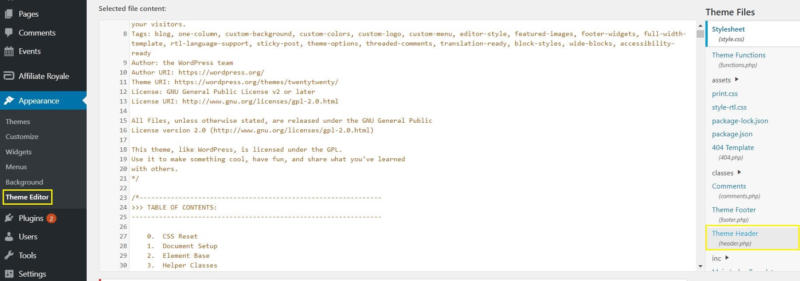
Then, find the <body> tag and insert the following code:
<body oncontextmenu="return false;">
Alternatively, you can use CSS instead of HTML by adding a snippet to your stylesheet. In WordPress, you can do so via Appearances > Customize:
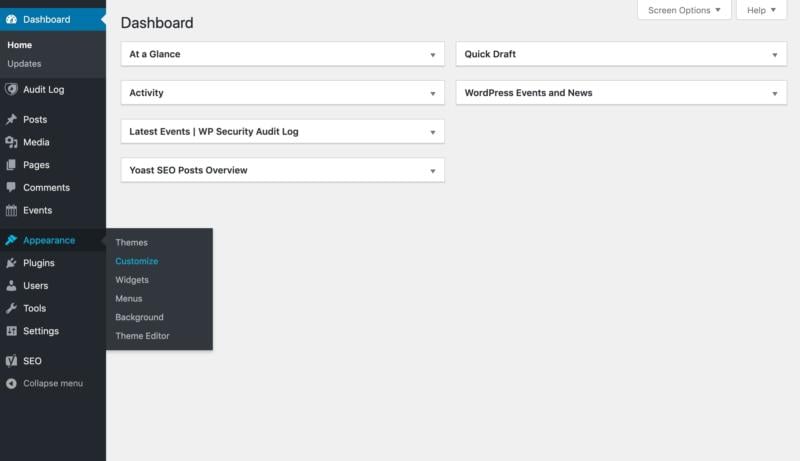
Scroll down the left-hand sidebar of the Customizer and click on Additional CSS:
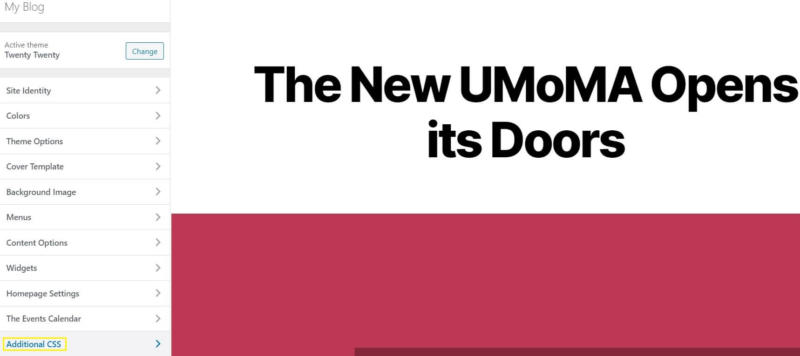
In the resulting field, add the following code:
body {
-webkit-user-select: none; /* Chrome all / Safari all */
-moz-user-select: none; /* Firefox all */
-ms-user-select: none; /* IE 10+ */
-o-user-select: none;
user-select: none;
}Alternatively, WordPress users who would prefer not to add code to their websites can further simplify this process with a plugin. All In One WP Security & Firewall has a Disable Right-Click setting, as does Disable Right Click for WP.
2. Add a Digital Millennium Copyright Act (DMCA) Badge to Your Website
A Digital Millennium Copyright Act (DMCA) Badge can be a valuable asset for website owners. If you find someone using your content without permission and you’re displaying this graphic, you can take action against the plagiarist for free.
The DMCA takedown service can submit requests to recover images, text, video, audio, and even products that have been replicated. Such a warning is often sufficient enough to persuade content thieves to remove the stolen material immediately.
It doesn’t take long to sign up. To start, pick the badge you prefer, then enter your name and email address before you click on Signup:
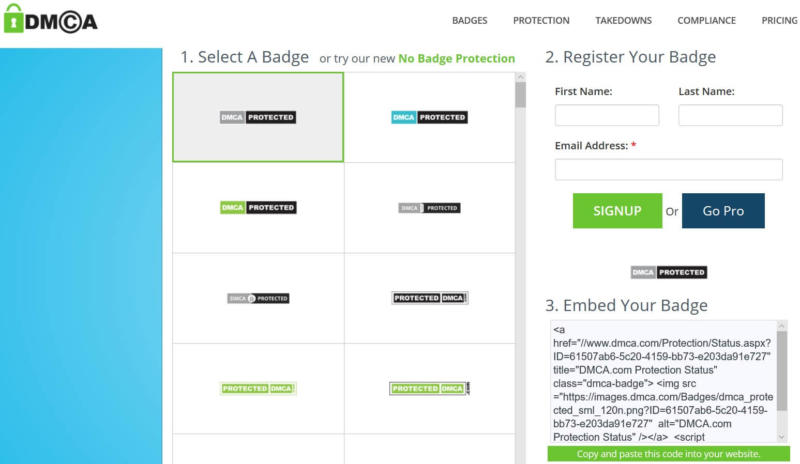
After you have chosen your badge and signed up, the DMCA provides an embed code so you can add it to your site. This can either be pasted in your footer so it appears at the bottom of all your webpages, or included only on specific content.
3. Use Watermarks On Your Content
It’s a sad reality that it’s far too easy for individuals to pass your content off as their own, especially when it comes to downloadable elements such as images or even documents. Another measure you can take to prevent this is to add a watermark to your media.
Experienced digital artists may use Adobe Photoshop or similar software to create a watermark. However, if you’re not familiar with such platforms, there are other means of accomplishing this.
For example, there are WordPress plugins that can do the heavy lifting for you, such as NextGEN Image Gallery:

We’ve made this plugin available as part of our hosting solutions. Once you’ve installed NextGEN Gallery, you can create a watermark by going to Gallery > Other Options > Watermarks:
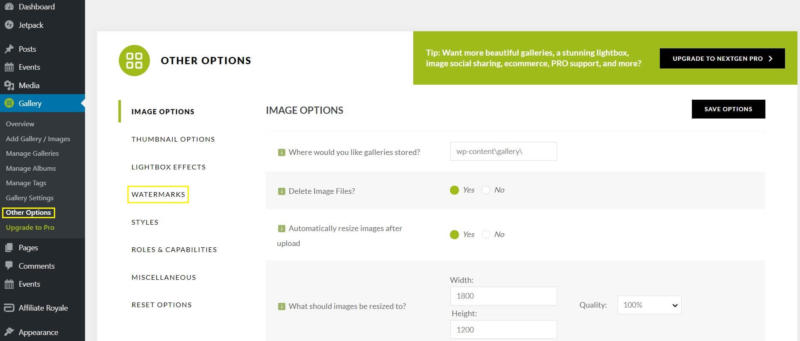
Here, you can select whether you want to use a graphic (such as your logo) or text as your watermark:
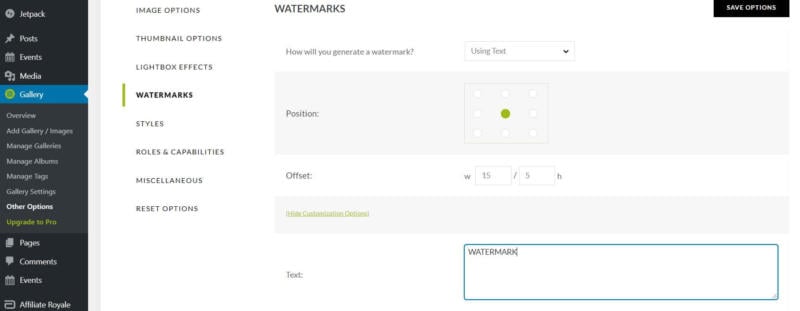
You can then adjust the opacity, color, and location of your watermark. Even if someone downloads your content with plans of plagiarizing it, your name or logo will prevent them from fully claiming ownership of it. Anyone who finds your media on another site will know where it originated.
Conclusion
While there is no infallible cure-all to protect your website’s content from plagiarism, you deserve some peace of mind when it comes to your online property. After all, the consequences can be serious for your site and livelihood in general.
That’s why it’s important to take precautionary measures where possible, such as those we discussed in this article:
- Restrict right-click functionality to impede content theft.
- Add a DMCA badge to your site as a deterrent.
- Use watermarks to clearly identify content that belongs to you.
Do you have any questions about how to protect your content from plagiarism? Let us know in the comments section below!
Image credit: Unsplash.
